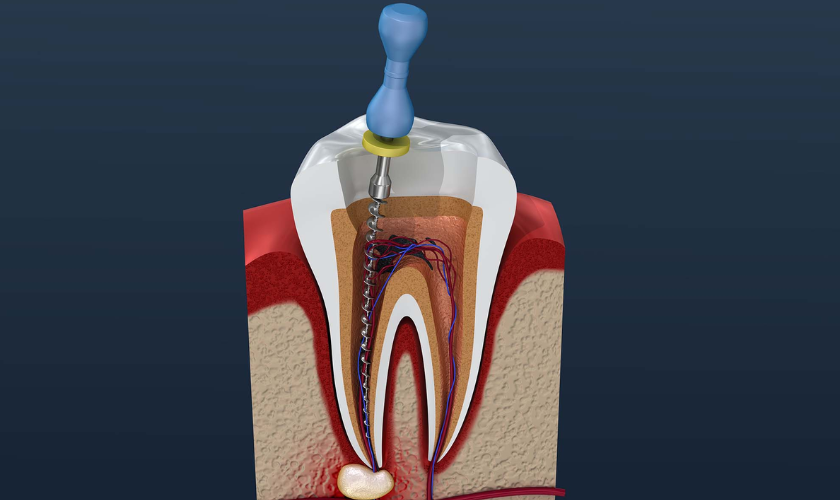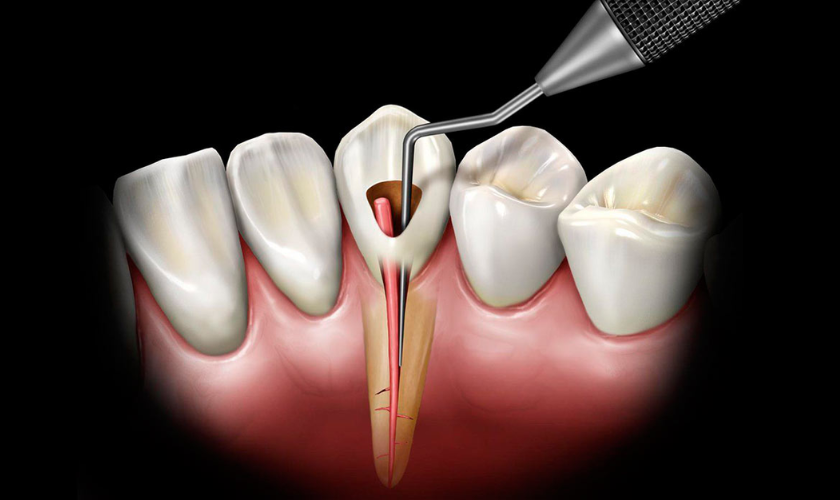
Root canal treatment, often misunderstood and feared, is a procedure designed to save a tooth that might otherwise need to be extracted. Despite common misconceptions, this treatment can be a lifeline for your dental health, preserving your natural tooth and preventing more invasive procedures. Here’s a closer look at how root canal therapy works and why it’s worth considering if you’re facing significant dental issues.
Understanding Root Canal Treatment
Root canal treatment focuses on addressing problems within the tooth’s pulp, which is the innermost part containing nerves and blood vessels. When the pulp becomes infected or damaged due to decay, injury, or disease, it can cause severe pain and lead to further complications. The goal of a root canal is to remove the infected pulp, disinfect the inside of the tooth, and seal it to prevent future issues.
The process begins with the dentist taking X-rays to assess the extent of the infection and plan the procedure. Local anesthesia is administered to numb the affected area, ensuring you feel no pain during the treatment. The dentist then drills a small access hole in the tooth to reach the pulp chamber. After removing the damaged pulp, the dentist cleans and disinfects the canal to eliminate bacteria. Finally, the tooth is sealed with a special material and often fitted with a crown to restore its function and appearance.
Benefits of Root Canal Treatment
One of the primary benefits of root canal treatment is that it allows you to keep your natural tooth. Extracting a tooth can lead to misalignment of surrounding teeth and affect your bite. By preserving your tooth, you maintain proper alignment and functionality. Additionally, a natural tooth contributes to maintaining the structure of your jawbone, which can prevent bone loss.
Another advantage is the relief of pain. An infected tooth can cause severe discomfort, making eating and speaking difficult. After a root canal, many patients experience significant pain relief and a return to normal dental function. This procedure is often much less painful than its reputation suggests, especially with modern advancements in dental care.
Addressing Common Concerns
Many people hesitate to undergo a root canal due to fear of pain or complications. However, the reality is that root canals are typically no more painful than having a filling placed. Advances in dental techniques and anesthesia have made the procedure more comfortable than ever. Your dentist will ensure you are well-numbed and will monitor your comfort throughout the process.
Another concern is the longevity of a tooth treated with a root canal. With proper care, a root canal-treated tooth can last many years or even a lifetime. Maintaining good oral hygiene, including regular brushing, flossing, and dental check-ups, is crucial for the long-term success of the treatment. Regular visits to your dentist in South Hills will help ensure that your root canal remains successful and that your overall dental health is maintained.
The Procedure Step-by-Step
Understanding what to expect can alleviate some of the anxiety surrounding root canal treatment. The procedure typically involves several key steps:
- Diagnosis: Your dentist will use X-rays and a thorough examination to determine the extent of the damage or infection. This step is crucial for planning the treatment.
- Anesthesia: Local anesthesia is administered to numb the affected tooth and surrounding area. This ensures that you remain comfortable during the procedure.
- Access Opening: The dentist drills a small hole in the tooth to access the pulp chamber. This allows for the removal of the damaged pulp.
- Pulp Removal: The infected or damaged pulp is carefully removed from the tooth’s interior. The dentist will clean and shape the canals to prepare them for filling.
- Disinfection and Filling: After cleaning, the dentist disinfects the canal to eliminate any remaining bacteria. The canal is then filled with a special material that seals it and prevents future infection.
- Sealing and Restoration: In most cases, the tooth is sealed with a temporary or permanent crown to restore its strength and function. This step is essential for protecting the tooth and ensuring it continues to function normally.
Post-Treatment Care
After undergoing a root canal, some discomfort or mild pain is normal, but it should be manageable with over-the-counter pain relievers. Following the procedure, it’s essential to follow your dentist’s care instructions to ensure proper healing. Avoid chewing on the treated side of your mouth until the final restoration is completed, and maintain good oral hygiene practices to support healing.
Regular follow-up appointments will be necessary to monitor the healing process and ensure that the treatment is successful. Your dentist will assess the tooth’s condition and make any necessary adjustments to the restoration.
When to Seek Root Canal Treatment
Not all dental issues require a root canal, but it’s essential to recognize when it might be necessary. Common signs that you may need a root canal include:
- Persistent Tooth Pain: Severe pain that doesn’t go away, especially when eating or drinking, may indicate an issue with the tooth’s pulp.
- Sensitivity to Heat or Cold: Prolonged sensitivity to hot or cold temperatures can be a sign of pulp damage.
- Swelling: Swelling in the gums or face near the affected tooth can signal an infection that may require a root canal.
- Discoloration: A tooth that becomes darker or discolored might have internal damage requiring treatment.
The Impact on Your Overall Dental Health
Choosing to undergo a root canal can have significant benefits for your overall dental health. By saving your natural tooth, you help maintain your bite alignment and prevent potential complications that can arise from tooth loss. Additionally, preserving your tooth can contribute to better oral health, as natural teeth are always preferable to artificial replacements.
Consulting with a qualified dentist in South Hills can provide you with personalized advice and ensure that you make an informed decision about your dental care. They will evaluate your specific situation and recommend the best course of action for your dental health.
Root canal treatment is a valuable procedure for saving a natural tooth that might otherwise be lost. Despite its reputation, it is a relatively straightforward and effective method for addressing severe tooth issues. By opting for a root canal, you can avoid tooth extraction, preserve your natural smile, and maintain optimal dental function. If you’re dealing with tooth pain or other symptoms, consult with your dentist about the possibility of a root canal. Taking action early can make a significant difference in your oral health. If you need expert care, a root canal in South Hills might be the solution to saving your tooth and ensuring a healthy smile for years to come.




